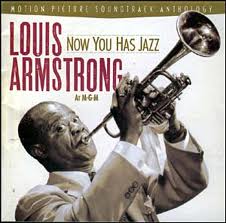The great Louis Armstrong was once asked, “How do you define jazz?” He replied, “Baby, if you got to ask, you’ll never know.” The same response might be appropriate for a marketing student or young MBA trying to wrap her head around “innovation.”
Like jazz, innovation is art, not science, so there can be no definitive formula for finding it. But to paraphrase the old song about love, you can certainly look for it in all the right places. Reading, observing, surrounding yourself with brilliantly creative people, keeping an open mind, a playful nature and a fierce curiosity about the world around you will certainly increase your odds.
The dictionary definition of innovation, “something new or different,” is just a small part of the story, the cost-of-entry for marketers. We live in a world where consumer options are infinite, yet economic uncertainty inhibits consumer spending; where turmoil, not stability, is the new normal; where consumers are smart, cynical and informed; where a cacophony of advertising messages is omnipresent and unrelenting, yet shrinking marketing budgets make it harder to compete.
Think “new and different” cuts it in that world? Bob McDonald, CEO of P&G doesn’t think so. In the interview we link to in this newsletter, he talks about how innovation was unleashed when the company shifted focus from technical features (the tape used to fasten Pampers, e.g.) to a larger purpose (“Caring for baby’s development”).
Laddering up a little higher, Jay Chiat always used to say that marketing and advertising could not be reduced to simple formulas or unique selling propositions. Rather, he said, “It’s all about the magic.”
Regrettably, magic and inspiration are hard to come by. You probably won’t find that elusive spark in the hot new business book or any of the “how to” blogs. A better idea is to shift your thinking from the linear left side to the creative right side of your brain. To get those right brain neurons firing, here are some ideas to get you started.
Voracious Reading
P&G’s premise that innovation is about “touching people’s lives,” not product features, directly translates to the need to tell a transcendent story. Brands must have a distinctive character, a brand personality that fits into a rich, true-to-life, three-dimensional narrative that is relevant to its users.
So how can you become a better storyteller so that you can apply those skills to creation of your own one-of-a-kind brand character and narrative? Nothing could be simpler. Inspiration rises directly in proportion to the number of great stories you absorb.
You’ll find great stories in daily newspapers, novels, biographies, non-fiction, The New Yorker and many other places. Any of them could provide insight or inspiration for your brand narrative.
Get Back To Your Brand Myth
Your brand’s story needs to resonate in a contemporary setting, but a different kind of story also merits consideration. All great brands have what I call a “Brand Myth,” or the “back story” of their creation.
Brand Myths are never about utility. They are always about a bigger idea: two guys in a garage who democratize technology, the creation of an Italian-style “third place” between home and work, athletic aspiration, online social community, etc.
These are the obvious examples, but even the most mundane of packaged goods products most likely has a Brand Myth behind it. A bit of a balancing act is required here. Stories of how brands fit into modern-day lives need constant updating. However, there are also timeless qualities of great brands, things like “aspiration,” that should never change.
We sometimes lose sight of these essential, timeless brand qualities in the mad rush to embrace a new trend. Think about Taco Bell Lite or Low Fat Oreos.
Getting back to a brand’s roots can be a great source of inspiration and keep you on track.
Study Creativity And Surround Yourself With Creative People.
I have always been fascinated by creative genius, people with an almost supernatural ability to empathetically grasp and rearticulate the human experience in a novel way. These are the people I look to for inspiration.
Read about Leonardo Da Vinci, Charlie Chaplin, Hank Williams, Thomas Edison or Steve Jobs. We may never be them, but we can certainly channel them to leverage their attitudes, beliefs and techniques to push ourselves.
A successful practice of The Right Brain Studio over the years is to bring in professional creative people from outside of the marketing world. They include artists, musicians, actors, directors, writers and others who are successful because they are so intuitively connected to ethos of the popular culture.
These kinds of pop culture gurus will help you sort out the deeper meaning of your brand and the kind of stories you should be telling in the blink of an eye.
Watch Saturday Night Live
I’ve said it many times. It’s amazing how life imitates Saturday Night Live. Their “fake” commercials have predicted new products like Southwest Airlines, the Fusion razor, a new Ben & Jerry’s flavor and all the breakfast cereals based on cookies and candies.
Part of the explanation can be found in my last point about creative people being tuned in to the popular culture. But more of it might be tied to the improvisational comedian’s loving embrace of the absurd and unexpected. Improvisational comedy is at its best when it’s outrageous, taking the familiar and mundane and looking at it through a very different – usually twisted – lens.
Improvisation Comedy demands this sense of outrageousness and so does innovation.
Inspiration can come from anywhere, any place, or any person at any time. But you have to get out there. Out in the world of creative people and ideas, and “out there” in how you think. So spend some time with your right brain today! Read stories and maybe even write one yourself. Your whole mind – and your business – will thank you for it.




